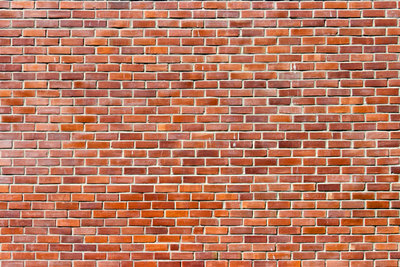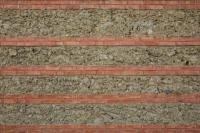The brick and its uses
The classic brick is one of the oldest building materials in the world. In its current form, it is often used in construction. The original stones are only important for architectural monuments. The material, fired clay, on the other hand, is one of the modern building materials.

History of bricks
The term brick is not clearly defined. It is common in southern Germany and Switzerland and refers to stones that are formed and fired from clay or loam.
- As early as the Neolithic Age, people built houses out of clay. They made manageable stones from the material, which they air-dried. In this form, clay can be easily transported and built. They were air-dried bricks.
- During excavations in Mesopotamia, archaeologists found burnt bricks dating from around 3,000 BC. The stones found have a uniform shape with smooth outer surfaces. These are the first bricks.
- Between 2,800 and 2,200 BC, some cultures in India had typical single-handed bricks with an edge ratio of 1: 2: 4, which you can also find in today's bricks.
- The features, smoothly painted outer surfaces and the edge ratio are important. Bricks in this shape combine to form perfect walls. Two brick widths or four heights fit on one brick length. This enables a modular construction of walls. You can use it to build cubes with uniform edge lengths.
- The technique of making bricks was known to the Romans in ancient times. From 100 BC to modern times, brick buildings are common in Italy. In Germany, the brick was forgotten after Roman times. It was not until the twelfth century that the stones prevailed again. In the Middle Ages, cities and churches emerged from the material.
Such an oven made of clay is a little attraction - but not only that, it makes ...
Properties of different types of bricks
From a technical point of view, every block-shaped stone baked from clay or clay is a brick. Typically, the construction industry uses different names for different shapes and compositions of materials.
- A simple stone made of clay that has been baked at 900 degrees Celsius is called a brick. It's porous and fragile. These stones are suitable for walls that you are plastering or for interior walls. Today only hand-formed stones according to historical measurements are called brick.
- Clay bricks contain a higher proportion of clay. The firing temperature is higher. These stones are harder. Although they absorb less water than the clay blocks, walls made of the stones need protection by plaster.
- The size of the stones varied from region to region. It was based on the weight and format that a man can move with one hand. Hence the name one-hand brick. Today the normal format is 24 x 11.5 x 7.1 centimeters. The length of 24 centimeters corresponds to twice the width of 11.5 centimeters plus a joint of one centimeter. This corresponds to three times the height of 7.1 centimeters, plus twice the joint thickness of one centimeter.
- Clinkers contain silicate. The firing temperature is over 1,200 degrees Celsius. The stone sintered, which means that glass was created. Clinker bricks are hard and almost impermeable to water.
- Thin bricks are so-called facing bricks, which are usually made of clinker. These stones are suitable for cladding facades. They are a so-called front masonry to protect the back masonry from the weather.
Manufacture of bricks
Many modern bricks are technically based on historical bricks. Thousands of similar stones are produced in modern brickworks.
- For historical bricks, brick bakers mix clay with water to form a smooth, heavy dough, which they press into brick models, as the molds are called. In order to get a smooth shape, the craftsmen paint the surface. You overturn the stones from the mold and let them dry. They alternately stack these stones with coal to form large mounds on top of the piles. They cover these with fiefs and inferior bricks. The fire kindled in it glows for 14 days, temperatures of 800 to 900 degrees Celsius arise. These stones are important for restoring old brick houses. They are unsuitable as a modern building material.
- Modern brick factories press the clay mass through molds, long strands are created from which the machines cut bricks. This method can be used to produce bricks with historical dimensions as well as hollow bricks. If there are cavities inside the strands, larger bricks can be made with the same weight. The dried stone is burned in slow-burning ovens, which always have a constant temperature of over 1,000 degrees Celsius. Additions to the clay mass, such as styrofoam, result in bricks with a good thermal insulation value.
- The production of facing bricks is possible in two ways: machines either cut thin slices from the strands or they separate the bricks from glue boards. The clay mixtures usually contain additives to get colored stones.
Use of the fired stones
Although the conventional brick is no longer of any importance in new buildings, clay bricks are a modern building material that offers many advantages.
- The material is stable, resistant to fire and offers good natural thermal insulation.
- It is a natural material that does not contain any chemical components and evaporates.
- Since hollow bricks are lighter than bricks, larger bricks can easily be processed by one person. The bigger the stone, the faster a wall is finished.
- Large format bricks are suitable for building of solid walls, bricks can be used to set accents in the interior. Facing bricks are natural exterior cladding that builders use partly in the interior because of their appearance. With them you can walls design rustic.
The classic brick can only be found on historical buildings. The modern further developments are a current building material that is suitable for residential and commercial buildings.
How helpful do you find this article?

